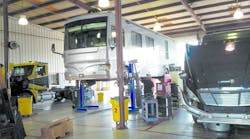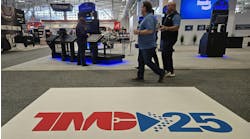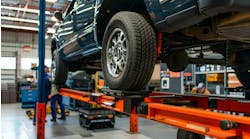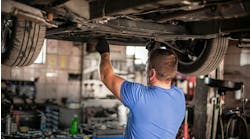Not to be overlooked when designing a vehicle shop is the integration of lifts and workshop equipment says Radu Pop, national account sales manager of MAHA USA (www.maha-usa.com). MAHA USA engineers and manufacturers American crafted vehicle lifts and accessories for all aspects of heavy duty and light duty vehicle maintenance operations.
He offers the following considerations to help create a foundation for an efficient shop design that incorporates the right equipment for an overall successful maintenance operation.
Research and Industry Resources – Knowledge is power, so begin with research and learn from industry experts, advises MAHA USA’s Pop. He says a good resource for shop design is offered by the Technology Maintenance Council through its Recommended Practices Manual. It combines the knowledge of industry professionals to provide guidelines for fleet maintenance.
TMC (www.trucking.org/Technology_Council.aspx) is North America’s premier technical society for truck equipment technology and maintenance.
Material within the TMC manual relating to the process of shop design and equipment are:
- Recommended Practice (RP) 510, New Facility Development.
- RP 513, Estimating Number of Service Bays.
- RP 515, Maintenance Shop Considerations.
- RP 804, Labor Productivity Measurement.
- RP 534, Guidelines for Determining Vehicle Lift Productivity Efficiencies.
“Whether your maintenance department is strictly performing PMs or getting into transmission R&R (rebuild and reinstall), having the right layout and equipment to perform your daily tasks is crucial in minimizing downtime and dwell time,” Pop says.
Ergonomics and Technician Comfort – “Utilizing equipment which improves comfort and ergonomics for technicians can help prevent health issues, reduce accident risks and increase inspection and repair accuracy,” Pop says.
“It is well recognized in the industry that finding and keeping good technicians has become a time-consuming and costly endeavor. Providing a shop layout with modern equipment is appealing for high-demand technicians and cultivates professional development, preserves employee loyalty and improves retention rates.”
Identify the Right Lifting Equipment – The right lifting equipment may put more vehicles on the road by accelerating routine maintenance and turnaround times.
There are many types of lifts on the market to accommodate a variety of work styles, Pop of MAHA USA says. Key factors to remember when choosing lifts for a shop:
- Size of the shop.
- Height of the shop.
- Select a lift manufacturer to partner with who can offer sales, training, service and support throughout the life of the lift.
- Be sure the lift being purchased is certified by an independent third party and adheres to ALI (Automotive Lift Institute) standards.
“This guarantees specific safety standards have been met,” says Pop.
Other Workshop Equipment – Many service operations invest not only in lifting equipment, but also in diagnostics, alignment, wheel service and testing technology to improve every aspect of the vehicle maintenance process. Pop says that after determining one’s primary maintenance initiatives and what the shop layout can support, he recommends:
- Always choosing certified equipment from reputable service provider who includes on-site training.
- Making sure technicians have adequate user-training in order to maximize productivity and use the equipment safely.
Return on Investment – “With all good business practice, fleet managers should always take careful consideration before making an investment,” says Pop. “Depending on your specific type of maintenance operation, measuring the effectiveness of equipment in your work environment should not be a difficult task. Know what best suits your needs and what will award you a strong ROI.
“Reputable suppliers will generally provide equipment ROIs if they are asked, and will encourage creating your own studies. If your shop design pays for itself in less than 12 to 18 months, and generates considerable amounts of money for years to come, the acquisition is well worth it.”




